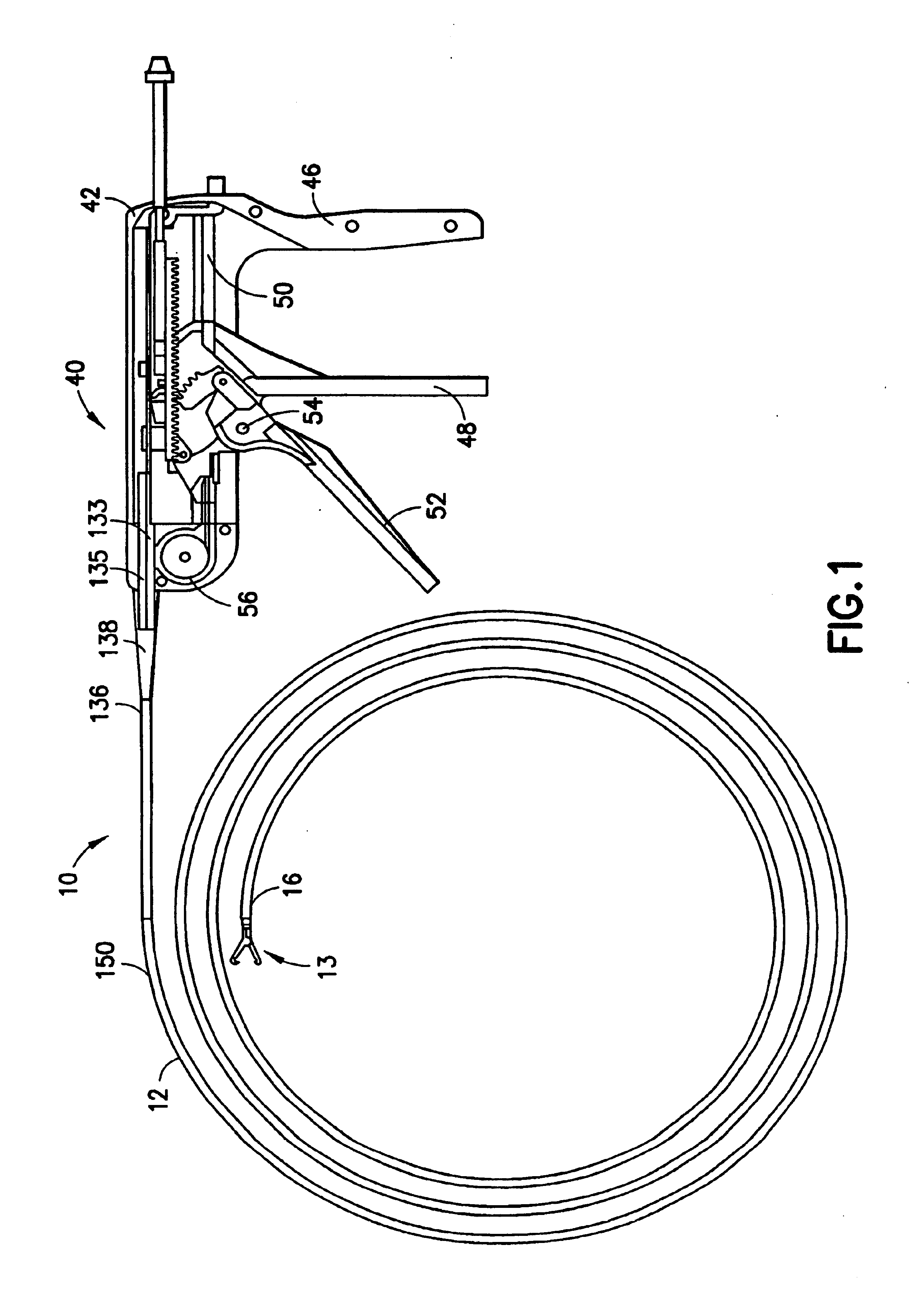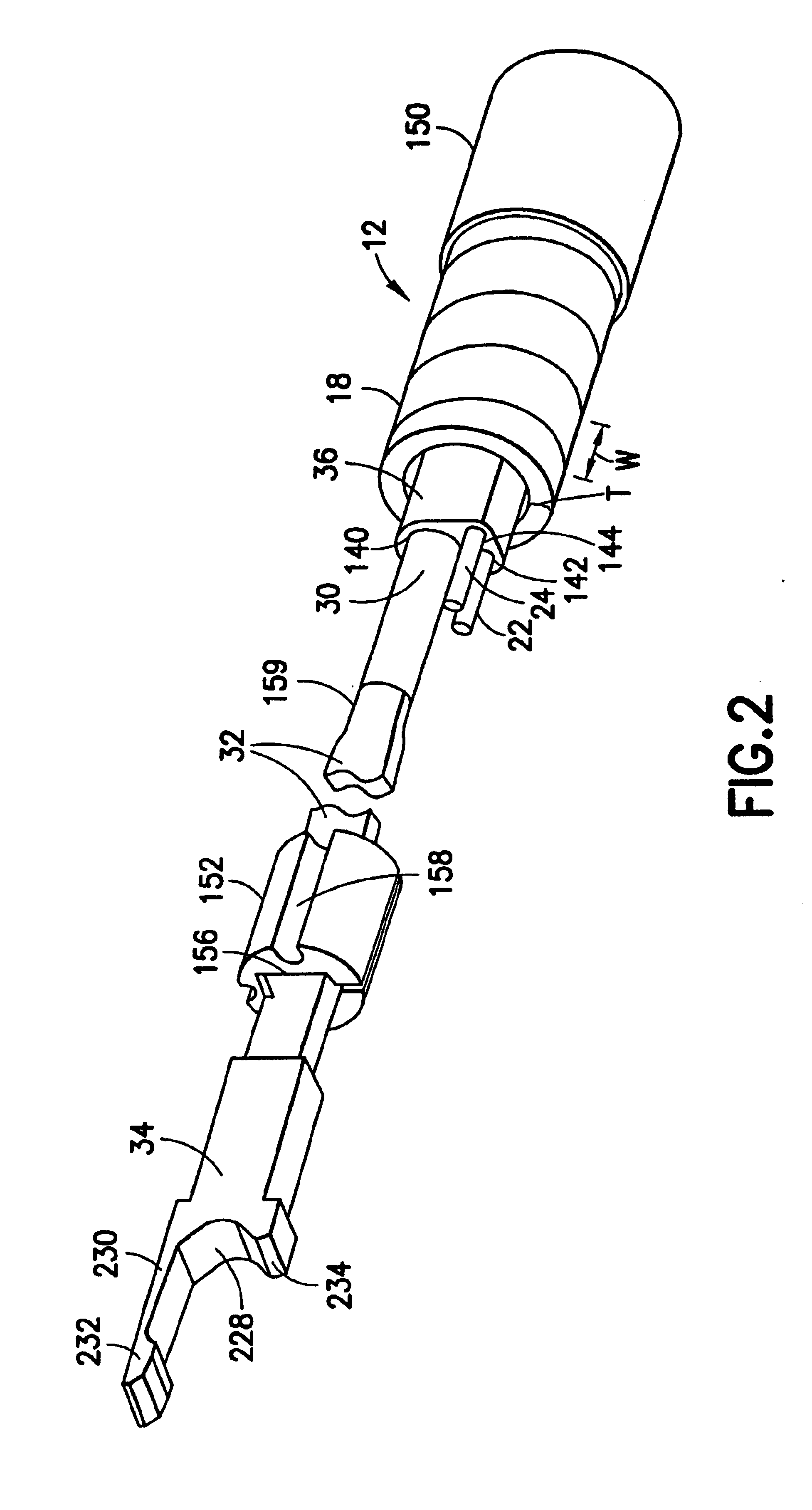Surgical clip applier having jaws adapted to guide and deform a clip
- Summary
- Abstract
- Description
- Claims
- Application Information
AI Technical Summary
Benefits of technology
Problems solved by technology
Method used
Image
Examples
example 1
In a first prototype, indicated by ‘RUN #1’, ‘RUN #2’ and ‘RUN #3’, the tubular coil 12 has an outer diameter of 0.09 inch and an inner diameter of 0.06 inch. The clip-advancing wire 30 has an outer diameter of 0.017 inch and the end effector wires 22, 24 each have an outer diameter of 0.011 inch. The proximal end of the end effector wires 22, 24 are pulled with 11 lbs of force which generally results in 5 to 10 lbs of force at the distal end of the end effector wires, depending on the degree to which the tubular coil 12 is bent (modeled by looping the tubular coil through two inch loops); i.e., frictional losses reduce the transmitted force. Moreover, it is noted that whatever force is transmitted to the distal end of the end effector wires 22, 24, only approximately one-fifth of that force is applied to the jaws, as the distance from the jaw tang 168 to the pivot 166 is relatively shorter than the length of the end of the jaw (anvil 184) to the pivot 166, approximately in a one to...
example 2
In a second prototype, indicated by ‘RUN #4’, the diameters of the tubular coil 12 and end effector wires 22, 24 are the same as Example 1. However, the diameter of the clip-advancing wire 30 is decreased to 0.015 inch. With the tubular coil 12 extending through no loops, a six pound input pushing force resulted in an output pushing force of 2.11 lbs (957 grams).
example 3
In a third prototype, indicated by ‘RUN #5’, ‘RUN #6’ and ‘RUN #7’, the diameters of the tubular coil 12 and end effector wires 22, 24 are the same as Example 1. However, the diameter of the clip-advancing wire 30 is increased to 0.02 inch. With the tubular coil 12 extending through no loops in ‘RUN #5’, an input pushing force of 8 lbs resulted in an output pushing force of 4.03 lbs (1828 grams). With the tubular coil 12 extending through one two-inch loop in ‘RUN #6’, an input pushing force of 8 lbs resulted in an output pushing force of 4.08 lbs (1851 grams). With the tubular coil extending through two-inch loops, in ‘RUN #7’, an input pushing force of 8 lbs resulted in an output pushing force of 3.54 lbs (1605.7 grams).
PUM
 Login to View More
Login to View More Abstract
Description
Claims
Application Information
 Login to View More
Login to View More - R&D Engineer
- R&D Manager
- IP Professional
- Industry Leading Data Capabilities
- Powerful AI technology
- Patent DNA Extraction
Browse by: Latest US Patents, China's latest patents, Technical Efficacy Thesaurus, Application Domain, Technology Topic, Popular Technical Reports.
© 2024 PatSnap. All rights reserved.Legal|Privacy policy|Modern Slavery Act Transparency Statement|Sitemap|About US| Contact US: help@patsnap.com










